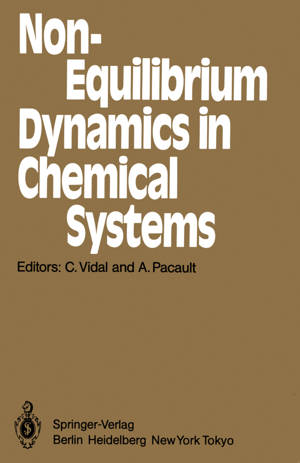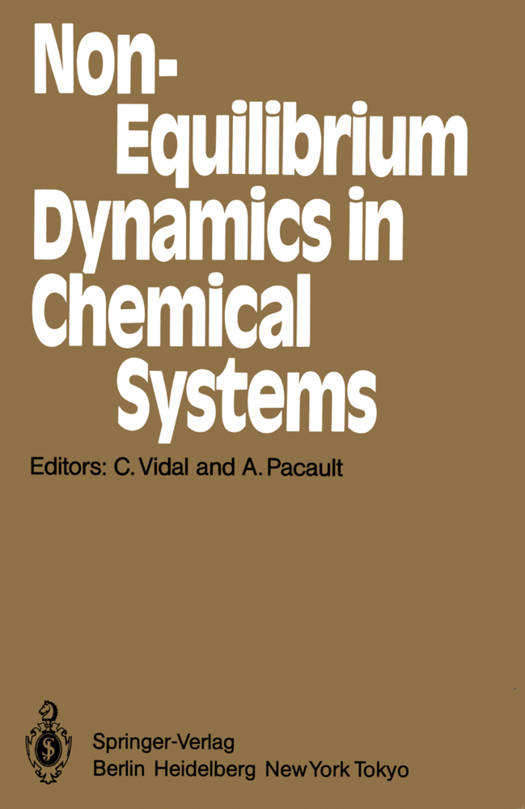
- Afhalen na 1 uur in een winkel met voorraad
- Gratis thuislevering in België vanaf € 30
- Ruim aanbod met 7 miljoen producten
- Afhalen na 1 uur in een winkel met voorraad
- Gratis thuislevering in België vanaf € 30
- Ruim aanbod met 7 miljoen producten
Zoeken
Non-Equilibrium Dynamics in Chemical Systems
Proceedings of the International Symposium, Bordeaux, France, September 3-7, 1984
€ 106,92
+ 213 punten
Omschrijving
Markedly apart from elementary particle physics, another current has been building up and cont i nuous ly growi ng within contemporary phys i cs for severa 1 decades, and even expanding into many other disciplines, especially chemistry, biology and, quite recently, economics. Several reasons account for this: presumably the most impor- tant one lies in the fact that, whatever the specific problem, model or material concerned, the same basic mathematical features are always involved. In this way, a general phenomenology has emerged which, unlike thermodynamics, is no longer depen- dent upon the details or specifics: what largely prevails is the nonlinear charac- ter of the underlying dynamics. Perhaps we are witnessing the emergence of a "non- linear physics" - in a way similar to the birth of "quantum physics" in the twen- ties - a physics which deals with the general behaviour of systems, whatever they are or may be. Over the past fifteen years, chemical systems evolving sufficiently far from equilibrium have proved to be particularly well fitted to experimental research on nonlinear behaviour: oscillation, multistability, birhythmicity, chaotic evolution, spatial self-organization and hysteresis are displayed by chemical reactions whose number is growing each year. In this volume are collected the lectures, communica- tions and posters (abstracts) presented at an international meeting entitled: "Non-Equilibrium Dynamics in Chemical Systems", held in Bordeaux (France), Septem- ber 3 rd-lth, 1984.
Specificaties
Betrokkenen
- Uitgeverij:
Inhoud
- Aantal bladzijden:
- 258
- Taal:
- Engels
- Reeks:
- Reeksnummer:
- nr. 27
Eigenschappen
- Productcode (EAN):
- 9783642701986
- Verschijningsdatum:
- 17/11/2011
- Uitvoering:
- Paperback
- Formaat:
- Trade paperback (VS)
- Afmetingen:
- 170 mm x 244 mm
- Gewicht:
- 435 g

Alleen bij Standaard Boekhandel
+ 213 punten op je klantenkaart van Standaard Boekhandel
Beoordelingen
We publiceren alleen reviews die voldoen aan de voorwaarden voor reviews. Bekijk onze voorwaarden voor reviews.










